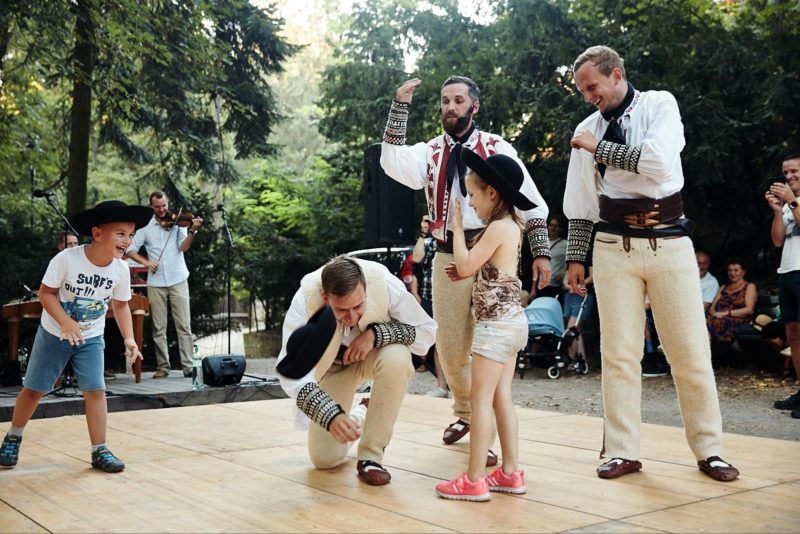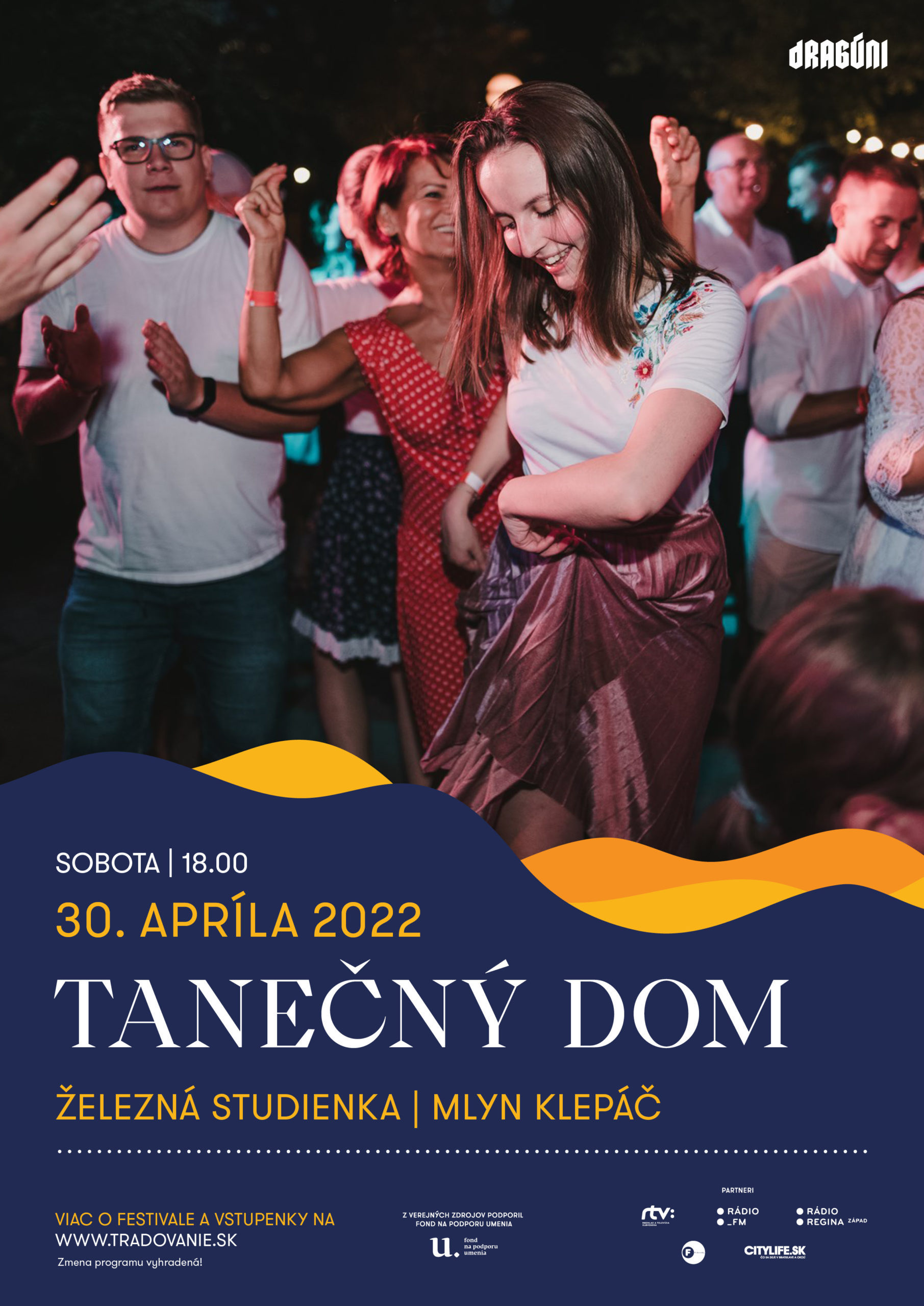Festival House of Traditional Dances
The real May ball entertainment in the nature above Bratislava will surely get your blood flowing. Whether young due to age or spirit, welomed are all those who like traditional dances in a new way. This special edition of the House of Traditional Dances is a part of the fabulous Festival of tradition handed down.
Experts of dance motion will guide you through original dance variations, and excellent bands will play stylishly to make your feet moving. Come and shake a hoof at the spring dance, an extraordinary experience awaits you. This evening will be the culmination of the all-day Great Forest Dance at Železná studnička.
In recent years, folk culture has become more and more popular, and new generations of people has fallen for its various forms. Combining traditions and motion of the dance is one of the most engaging ways to bring the art of the ancestors closer to everyone who likes dancing. In addition, The House of Traditional Dances series of the Dragúni NGO has received a prestigious award. In 2018, it was included in the Register of Best Safeguarding Practices in Slovakia. The dance house is thus officially the best traditional dance in Slovakia.
Taking place by well-known Klepáč Mill at Železná studnička on April 30, this edition of The House of Traditional Dances will be dedicated to dances from Horehronie cultural region in central Slovakia, Orava cultural region in the northern part of Slovakia and Šariš cultural region in the northeastern Slovakia, dances from Romanian Moldavia as well as Roma dances from Šariš cultural region or czardas from Abov cultural region in the southeast of Slovakia, all under the guidance of the leading personalities of Slovak folk revival movement Ondrej Galbička and Katarína Galbičková as well as Gábor Gálik, Klaudia Gálik, Peter Vajda, Kristína Vajdová, Peter Hrabovský with their guests.
The period of the May balls after 40 days of fasting and celebrating the Easter begins with the putting up the maypole. As a month, it is generally considered to be the time of love and the birth of a new life. Our ancestors were putting up the tall maypole trees with colorfully decorated tops originally as a sign of the page-boys’s sympathy for the chosen maidens in front of the girls’ houses at the turn of April and May. Nowadays, only one tree is usually put up in the middle of the village or the main square. Once installed, maypole usually remains on site the entire month until it is pulled down at particular celebration.
In its XX. annual season, The House of Traditional Dances will be during the Festival of tradition handed down brightened up by dances from villages of Polomka in Horehronie region, Zuberec in Orava region and Šemetkovce in Šariš region, dynamic circle dances from north-eastern Romanian region of Western Moldavia, Roma dances from village of Petrovany in Spiš region and also by czardas from village of Bidovce in Abov region. Music will be provided by dashing Michal Pagáč Folk Band, Hanusz Zoltán Band and Michal Noga. You will experience it for yourself if you come to try it out, have a good time and indulge in a proper portion of amazing traditions in an unusual way.
The Representative List of Intangible Cultural Heritage of Slovakia is a listing of remarkable elements and practices acknowledged by both society and individuals and preserved in compliance with universal principles of human rights, equality, support and mutual respect between cultural societies. The inclusion in the national representative list is a basic condition for applying for the inclusion in the UNESCO World Representative List of Intangible Cultural Heritage.
The inclusion in the Register of Best Safeguarding Practices in Slovakia is an acknowledgement of exceptional programmes, projects and activities best reflecting the principles and objectives of the Convention for the Safeguarding of the Intangible Cultural Heritage. They promote safeguarding and development of the intangible cultural heritage, are accepted by societies and individuals and survive in accordance with the universally observed human rights principles, as well as the principles of equality, support and mutual respect among cultural communities. The Register of Best Safeguarding Practices in Slovakia represents high social recognition and remains a means for popularization activities, which leads to complex care of intangible cultural heritage. It further represents the fundamental step in compiling the Register of Best Safeguarding Practices on an international level.
Click on the poster to see the Facebook Event Page:

